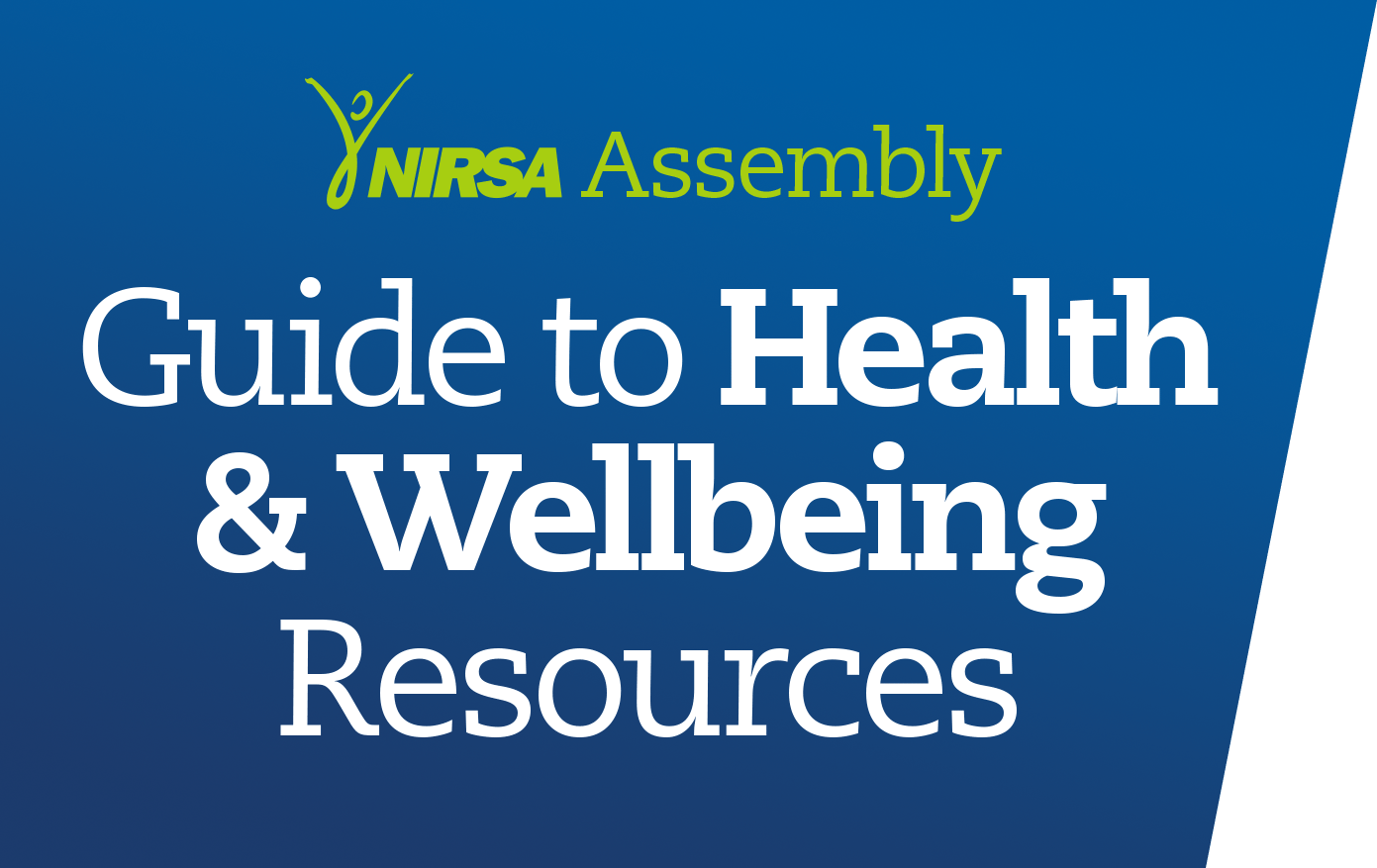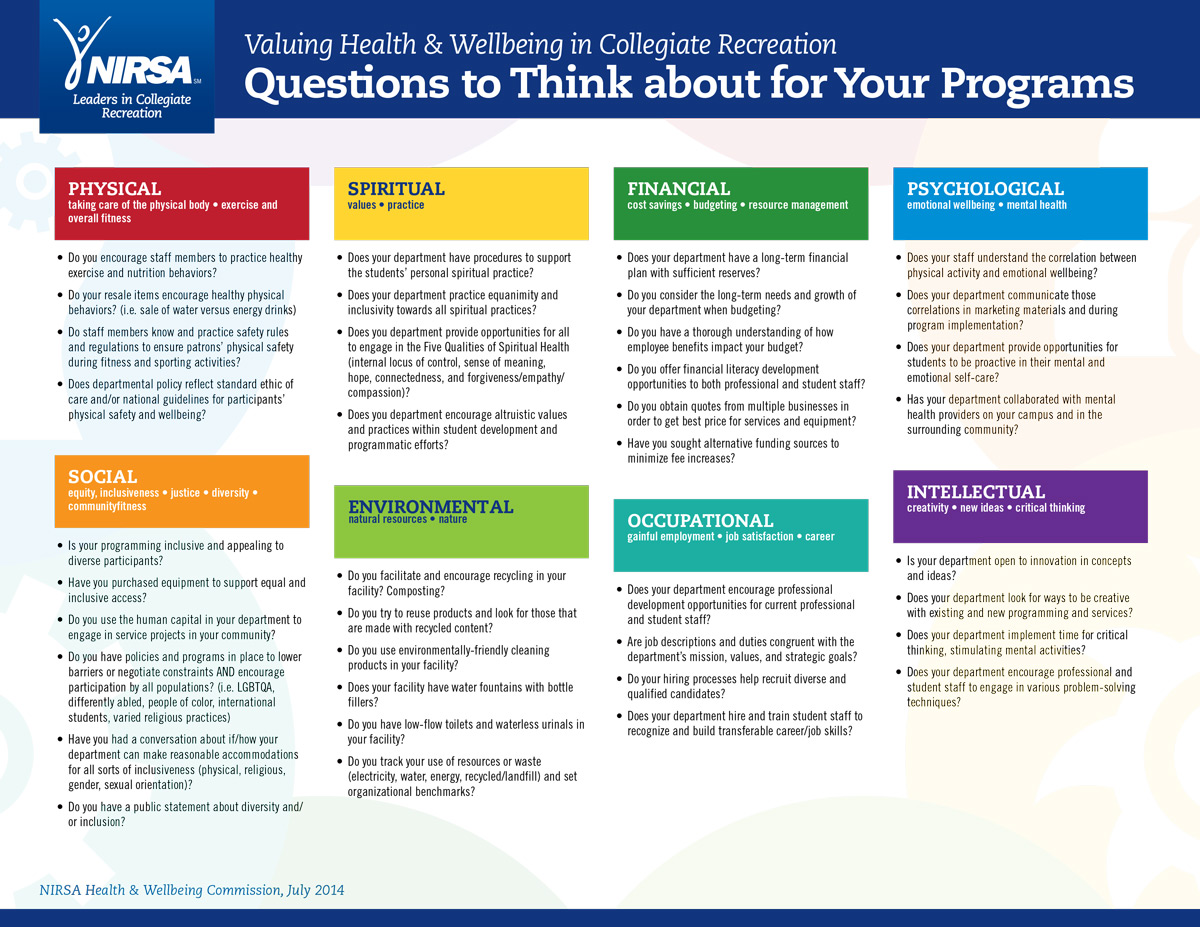Adopting a wellbeing model within the collegiate recreation department, or better yet campus-wide, can help focus efforts around health and wellbeing initiatives, as well as help to brand and market a program.
Who owns wellbeing on campus?
No one does. Or, depending on your perspective, everyone does. To obtain a campus culture which promotes and nurtures health and wellbeing, an integrated, collaborative approach campus-wide is necessary. The establishment of a well-represented Wellbeing or Wellness Committee, Working Group, or Collaborative Team with campus partners can assist in the process.
When deciding on which model to use for your campus, conversations with campus partners (e.g., Student Health Center, Health Promotion, Counseling & Psychological Services, etc.) will be an important part of the decision-making process.
The creation of a wellness wheel or tool helps communicate the dimensions or initiatives of the program. The creation of a wellbeing wheel or tool helps communicate the dimensions or initiatives of the program.

University wellbeing and wellness models
- Cleveland State University’s Shine Well
- Montana State University’s HHD Well-Being Model
- University of Minnesota’s Model of Wellbeing
- University of New Hampshire Wellness Wheel
- Georgia Tech’s Health & Wellbeing Strategy Model
- Wake Forest University’s Thrive
Non-university models for wellbeing and wellness
- Association of Ontario Health Centres’ Model of Health and Wellbeing
- Collective Impact (2011)
- JED Foundation’s Model for Comprehensive Mental Health Promotion and Suicide Prevention for Colleges and Universities
- National Wellness Institute (NWI)– The Six Dimensions of Wellness model
- Okanagan Charter
- PERMA Model
- RWJF Culture of Health Action Framework
- The student well-being model (SWBM): a conceptual framework for the development of student well-being indicatorsby Anne Kathryn Soutter, Billy O’Steen, & Alison Gilmore | February 4, 2013. doi: 10.1080/02673843.2012.754362
- Wellness Network– What are the Wellness Dimensions?
- Yukon Health and Social Services Holistic Model of Wellness
Non-university resources for wellbeing and wellness
- American College Health Association Standards of Practice for Health Promotion in Higher Education
- American Medical Student Association (AMSA) – The Seven Dimensions of Wellness by Kelsey Lyon | July 8, 2015
- Bringing Theory to Practice: The Well-Being and Flourishing of Students (2013)
- Centers for Disease Control and Prevention: Wellbeing Concepts
- Counseling Today, A Publication of the American Counseling Association – Wellness Matters by Ashley J. Blount, Glenn W. Lambie and Daniel B. Kissinger | November 2, 2016
- Healthy Universities: Introduction and Model (2010)
- Institute for Wellness Education (IWE) – Wellness 101
- International Council of Active Aging (ICAA) – Active Aging and Wellness
- Leadership for a Healthy Campus: An Ecological Approach for Student Success (2005)
- Partnership for a Healthier America Healthier Campus Initiative
- Ryff’s Model of Psychological Well-Being
- Substance Abuse and Mental Health Services Administration (SAMHSA): The Eight Dimensions of Wellness | Updated October 24, 2017
- World Health Organization Health Promotion Glossary of Terms 2021
Contribute to these resources and help us keep the information current.




